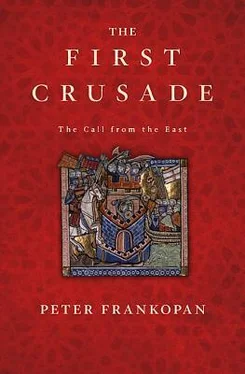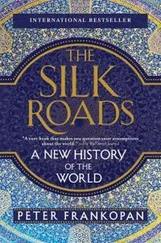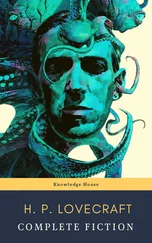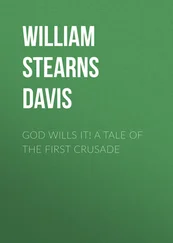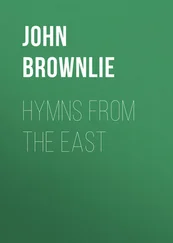9 First Encounters with the Enemy
1. Barber and Bate, Letters , p. 16. • 2. For example, Gesta Francorum , II, p. 14; Albert of Aachen, II.29, p. 110. • 3. Albert of Aachen, I.15, p. 30. • 4. Albert of Aachen, II.28, p. 110. • 5. Raymond of Aguilers, III, p. 26; Constable, Letters of Peter the Venerable , 2, p. 209; P. Magdalino, The Empire of Manuel I Komnenos, 1143– 80 (Cambridge, 1993), p. 44. Also see J. Shepard, ‘Cross-purposes: Alexius Comnenus and the First Crusade’, in Phillips (ed.), The First Crusade , p. 120, and n. 65. • 6. Anna Komnene, XI.2, p. 300. • 7. Gesta Francorum , II, p. 15. • 8. Raymond of Aguilers, III, p. 25. For Nicaea’s fortifications, A. Schneider and W. Karnapp, Die Stadtmauer von Iznik-Nicea (Berlin, 1938); C. Foss and D. Winfield, Byzantine Fortifications (Pretoria, 1986), pp. 79–121; R. Rogers, Latin Siege Warfare in the 12th Century (Oxford, 1992), pp. 17– 25. • 9. Gesta Francorum , II, p. 15. • 10. Albert of Aachen, II.29, p. 110–12; II.22, p. 96. • 11. Albert of Aachen, II.33, pp. 116–18. • 12. Matthew of Edessa, II.108, p. 163; Anna Komnene, VI.12, p. 179. • 13. Albert of Aachen, II.34, pp. 118–20; Fulcher of Chartres, I.10.vii, p. 82. • 14. Anna Komnene, XI.1, p. 298. • 15. Ibid., p. 299. • 16. Ibid. • 17. Ibid., pp. 297–8. • 18. Albert of Aachen II.25–6, pp. 102–4. • 19. Anna Komnene XI.2, p. 300. • 20. Ibid., p. 301. • 21. Anna Komnene, XI.2.vi, p. 327. • 22. Ibn al-Qalanisi, AH 490/Dec. 1096–Dec. 1097, p. 41. • 23. C. Foss, ‘Byzantine responses to Turkish Attacks: Some sites of Asia Minor’, in I. Sevcenko and I. Hutter, Aetos: Studies in Honour of Cyril Mango (Stuttgart, 1998), pp. 155–8. • 24. Barber and Bate, Letters , p. 19. • 25. Anna Komnene, XI.2, pp. 303–4. • 26. Anna Komnene, XI.3, p. 304: Fulcher of Chartres, I.10.x, p. 83. • 27. Barber and Bate, Letters, p. 19. Later writers also focus on the fate of Nicaea as a turning point in attitudes to Alexios, e.g. Orderic Vitalis, IX.8, 5, p. 56. • 28. Anna Komnene, XI.3, p. 304. • 29. Ralph of Caen, 10, pp. 31–2. • 30. Anna Komnene, XI.3, pp. 304–5; Ralph of Caen, 18, p. 42. • 31. Guibert of Nogent, IV.10, p. 81. • 32. Anna Komnene, XI.3, p. 304. • 33. Raymond of Aguilers, II, p. 23. • 34. Anna Komnene, X.2, p. 264. • 35. Fulcher of Chartres, I.11.i, p. 83. • 36. Anna Komnene, XI.5, pp. 309–12. • 37. Fulcher of Chartres, I.13.i, p. 87; Shephard, ‘“Father” or “Scorpion”’, p. 88. • 38. Anna Komnene, XI.2, p. 301; XI.5, pp. 309–10. • 39. Anna Komnene, XI.5, pp. 309–12. • 40. This episode is misplaced by Anna Komnene – Çaka’s death evidently took place after the Byzantine recovery of Smyrna, and not beforehand. Anna Komnene, IX.3, pp. 243–4. • 41. Ibid., p. 244. • 42. Fulcher of Chartres, I.11.vi, p. 85. • 43. Gesta Francorum , III, p. 18; Ralph of Caen, 40, p. 65; Fulcher of Chartres, I.11.ix, pp. 85–6. • 44. Fulcher of Chartres, I.11.viii, p. 85. • 45. Gesta Francorum , III, pp. 19–20. • 46. Fulcher of Chartres, I.12.iv–v, p. 87. • 47. Gesta Francorum , III, p. 21. • 48. Albert of Aachen, II.22, p. 94. Albert also refers to Kilidj Arslan as ‘magnificent’, I.16, p. 32; the same praise is given to another Turk further east, Danishmend, whom Albert also says is ‘worthy of praise’, IX.33, p. 680. • 49. Anna Komnene, X.10, pp. 291–2. • 50. Gesta Francorum , IV, p. 24. • 51. Ibn al-Qalanisi, AH 490/Dec. 1096–Dec. 1097, p. 42. • 52. Gesta Francorum , IV, p. 26. • 53. Ibid., p. 25. • 54. Albert of Aachen, III.10, pp. 152–4. • 55. Albert of Aachen, III.3, p. 140; Ralph of Caen, 23, p. 47. • 56. Albert of Aachen, III.3–18, pp. 140–66. • 57. Anna Komnene, X.10, p. 291. • 58. Raymond of Aguilers, IV, p. 37. • 59. Matthew of Edessa, II.104–8, pp. 161–4; II.117–18, pp. 168–70; Fulcher of Chartres, I.14.i–xv, pp. 88–92; Albert of Aachen, II.19–24, pp. 169–77. • 60. Fulcher, I.14.xi, p. 91. • 61. W. Saunders, ‘The Greek inscripti on on the Harran gate at Edessa: Some further evidence’, Byzantinsche Forschungen 21 (1995), pp. 301–4. • 62. Albert of Aachen, III.19, p. 168. • 63. Guibert of Nogent, VII.39, pp. 338–9. • 64. For example, Albert of Aachen, IV.9, p. 262; VII.31, p. 528; Guibert of Nogent, VII.39, p. 338; Orderic Vitalis, IX.11, 5, pp. 118–20. • 65. Thus Guibert of Nogent, VII.37, p. 335. • 66. Albert of Aachen, III.31, p. 361. • 67. Rogers, Latin Siege Warfare , pp. 25–39. • 68. Fulcher of Chartres, I.15.ii, p. 92. • 69. Gesta Francorum , V, p. 28. • 70. Raymond of Aguilers, VI, p. 49. • 71. Anna Komnene, XI.7, p. 317. For the appointment of Eumathios Philokales on Cyprus, IX.2, p. 242. • 72. Ibn al-Qalanisi, AH 490/Dec. 1096–Dec. 1097, p. 242. • 73. Fulcher of Chartres, I.16.ii, p. 96. • 74. Albert of Aachen, III.46, pp. 208–10. • 75. Albert of Aachen, V.1, p. 338. • 76. Matthew of Edessa, II.114, pp. 167–8. • 77. Fulcher of Chartres, I.16.iii, p. 96. • 78. Gesta Francorum , V, pp. 30–1. • 79. Raymond of Aguilers, VI, p. 39. • 80. Gesta Francorum , V, pp. 36–7. • 81. Ibid., p. 37. • 82. Ibid.
10 The Struggle for the Soul of the Crusade
1. Raymond of Aguilers, IV, p. 36. • 2. Guibert of Nogent, V.6, p. 206. • 3. Gesta Francorum , VI, p. 33. • 4. Guibert of Nogent, V.14, p. 217. • 5. Albert of Aachen, IV.39, pp. 308–10; Gesta Francorum , IX, p. 59. • 6. Raymond of Aguilers, IV, p. 35; Gesta Francorum , V, p. 30. • 7. Gesta Francorum , IX, p. 63; Ralph of Caen, 58, p. 84; Albert of Aachen, IV.13, pp. 266–8. • 8. Ralph of Caen, 58, p. 84. • 9. Guibert of Nogent, II.16, pp. 132–3. • 10. Kemal ad-Din, ‘La Chronique d’Alep’, RHC , Or. , p. 578; Anonymi Florinensis brevis narratio Belli sacri, RHC , Occ ., 5, p. 371; Ralph of Caen, 58, p. 84. • 11. Caffaro, De liberatione civitatum orientis , in RHC , Occ ., 5, p. 66. For supply from Cyprus, also see Baldric of Dol, p. 65; Raymond of Aguilers, VII, p. 54; Ralph of Caen, 58, p. 84. • 12. Hagenmeyer, Epistulae , p. 166. • 13. Gesta Francorum , VI, pp. 34–5; Raymond of Aguilers, IV, p. 37. • 14. Albert of Aachen, IV.40, pp. 310–12. • 15. Raymond of Aguilers, IV, p. 37. J. France, ‘The departure of Tatikios from the Crusader army’, Bulletin of the Institute of Historical Research 44 (1971), pp. 137–47. • 16. Gesta Francorum , VI, pp. 34–5. • 17. Hagenmeyer, Epistulae , pp. 165–6; Ralph of Caen, 58, p. 84. • 18. This found echoes in later accounts of the Crusade with other episodes. Orderic Vitalis, for example, claims that the first seeds of hatred of Alexios were sown at Nicaea, where his capture of the city paled in comparison to the costs incurred, provisions used and blood shed by the Crusaders. IX.8, 5, p. 56. • 19. Shepard, ‘When Greek meets Greek’, pp. 188–277. • 20. Gesta Francorum , VIII, pp. 44–5; Albert of Aachen, IV.15, p. 270; Ralph of Caen, 64–5, pp. 89–90; William of Tyre, IV.24, pp. 267–8; cf. Anna Komnene, XI.4, pp. 307–8. • 21. Gesta Francorum , V, p. 45; Fulcher of Chartres, I.19.i, p. 101; Anna Komnene, XI.6, p. 312. Also Barber and Bate, Letters , p. 28; Matthew of Edessa, II.119, p. 170. • 22. Gesta Francorum , VI, p. 44; Fulcher of Chartres, I.17, p. 98; Matthew of Edessa, II.120, p. 170; Ibn al-Qalanisi, AH 491/Dec. 1097–Dec. 1098, p. 45. Firouz is identified as a Turk, Raymond of Aguilers, VI, p. 47; Albert of Aachen, III.61, p. 234. Ibn al-Athir talks of the role played by Firouz (Rudbah) and the offer made to him, AH 491/Dec. 1097–Dec. 1098, pp. 14–15; Kemal ad-Din, p. 580. • 23. Anna Komnene, V.6, p. 144. • 24. Raymond of Aguilers, IV, p. 37. • 25. Gesta Francorum , VIII, p. 45; Albert of Aachen, IV.14–15, pp. 270–2; Ralph of Caen, 65, p. 654. • 26. Gesta Francorum , VIII, p. 46. • 27. Raymond of Aguilers, VI, p. 47. • 28. Albert of Aachen, IV.20, p. 278. • 29. Raymond of Aguilers, VI, p. 47; Albert of Aachen, IV.21, p. 280. • 30. Gesta Francorum , VII, p. 47. • 31. Gesta Francorum , VIII, p. 48. • 32. Albert of Aachen, IV.26, p. 286. • 33. Gesta Francorum , IX, p. 62. • 34. Albert of Aachen, IV.34, pp. 298–300; Raymond of Aguilers, VIII, p. 59; Ibn al-Athir, AH 491/Dec. 1097–Dec. 1098, p. 16. • 35. Fulcher of Chartres, I.19.iii, p. 101. • 36. For the discovery of the Holy Lance and its consequences on the Crusade, see T. Asbridge, ‘The Holy Lance of Antioch: Power, devotion and memory on the First Crusade’, Reading Medieval Studies 33 (2007), pp. 3–36. • 37. Albert of Aachen, IV.46, p. 320. • 38. Fulcher of Chartres, I.22.ii, p. 104; Gesta Francorum , IX, pp. 67–8. • 39. Fulcher of Chartres, I.22.v, p. 105. • 40. Raymond of Aguilers, VIII, p. 61. • 41. Fulcher of Chartres, I.23.iv–v, p. 106. • 42. Raymond of Aguilers, VIII, pp. 63–4. • 43. Gesta Francorum , IX, pp. 69–70. • 44. Albert of Aachen, IV.53, pp. 330–2. • 45. Ibn al-Athir, AH 491/Dec. 1097–Dec. 1098, pp. 16–17. • 46. Raymond of Aguilers, IX, p. 65. • 47. Robert the Monk, II.2, p. 90. • 48. Albert of Aachen, V.15, p. 396. • 49. Albert of Aachen, IV.9, pp. 260–2; Raymond of Aguilers, X, pp. 73–4. • 50. Albert of Aachen, V.15, p. 357; Gesta Francorum , X, pp. 73–4. • 51. Raymond of Aguilers, X, p. 75. • 52. Gesta Francorum , IX, p. 63. • 53. Anna Komnene, XI.6, p. 313. • 54. Raymond of Aguilers, IV, p. 37. • 55. Gesta Francorum , X, p. 72; Fulcher of Chartres, I.23.viii, p. 107. • 56. Albert of Aachen, V.3, pp. 340–2. • 57. Raymond of Aguilers, IX, pp. 67–8. • 58. Ralph of Caen, 51, p. 77. • 59. S. Duparc-Quioc (ed.), La Chanson d’Antioche , 2 vols. (Paris, 1976), 1, laisse 175. • 60. Raymond of Aguilers, IV, p. 34. • 61. Raymond of Aguilers, IX, p. 84. • 62. Barber and Bate, Letters , pp. 32–3. • 63. Ibid., p. 33; also Fulcher of Chartres, I.24.xiii–xiv, pp. 111–12. • 64. Ibid. Fulcher does not include this final paragraph, below, p. 203 • 65. Raymond of Aguilers, X, pp. 74–5; Gesta Francorum , X, pp. 75–6, 80–1. • 66. Gesta Francorum , X, pp. 75–6. • 67. Raymond of Aguilers, X, p. 80. • 68. Gesta Francorum , X, p. 80; Fulcher of Chartres, I.25.ii, p. 112. • 69. Gesta Francorum , X, pp. 82, 86; Raymond of Aguilers, XI, pp. 87, 91. • 70. Raymond of Aguilers, XIII, p. 105.
Читать дальше
